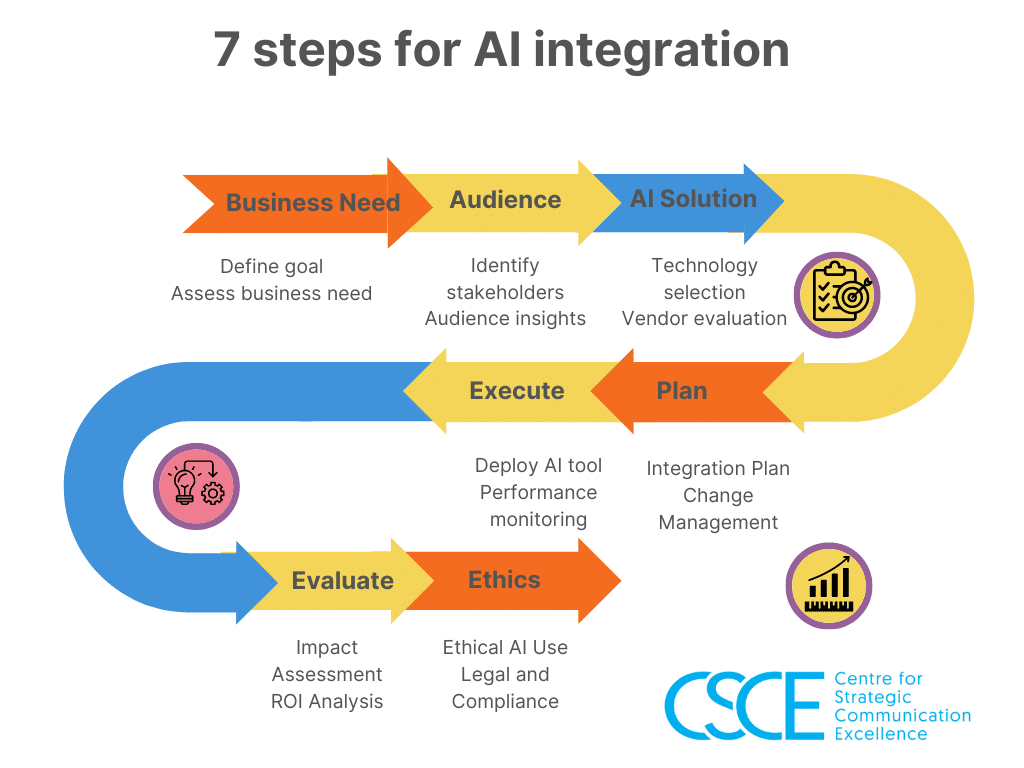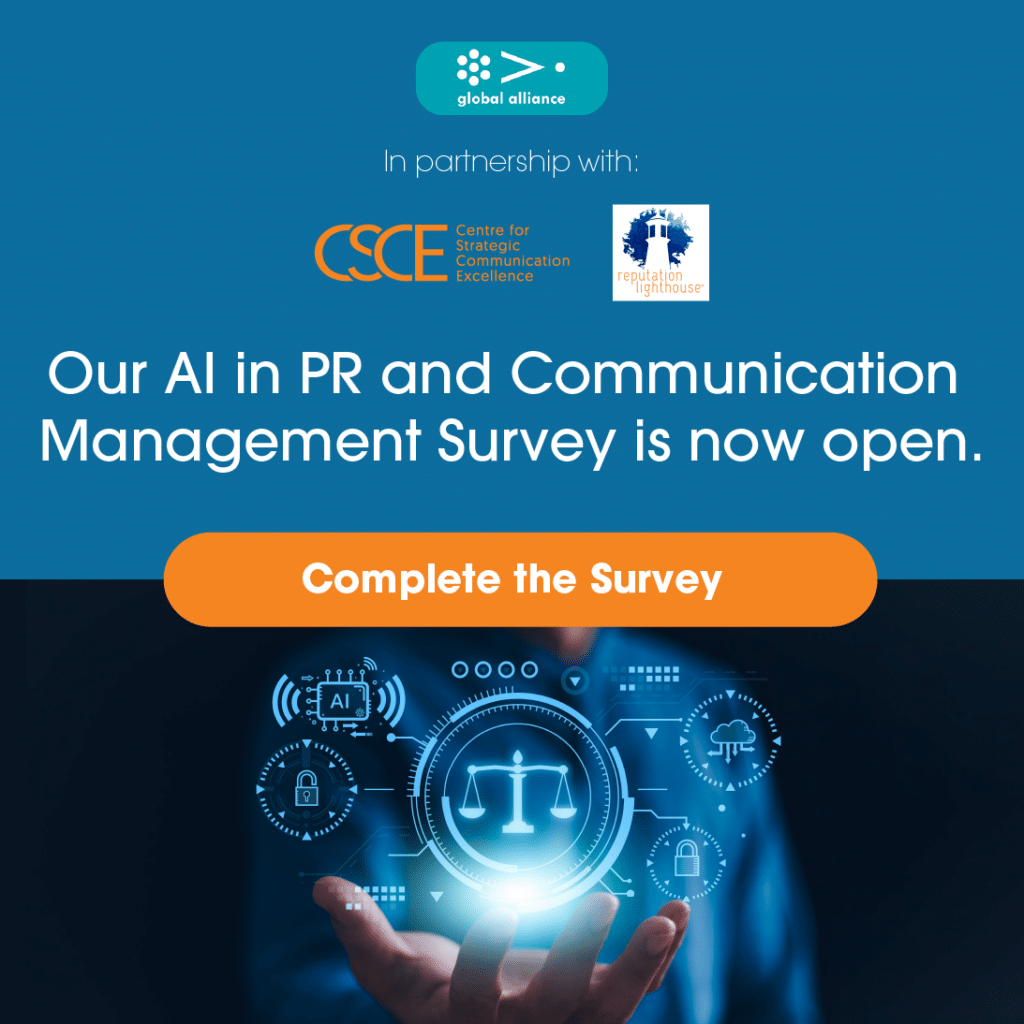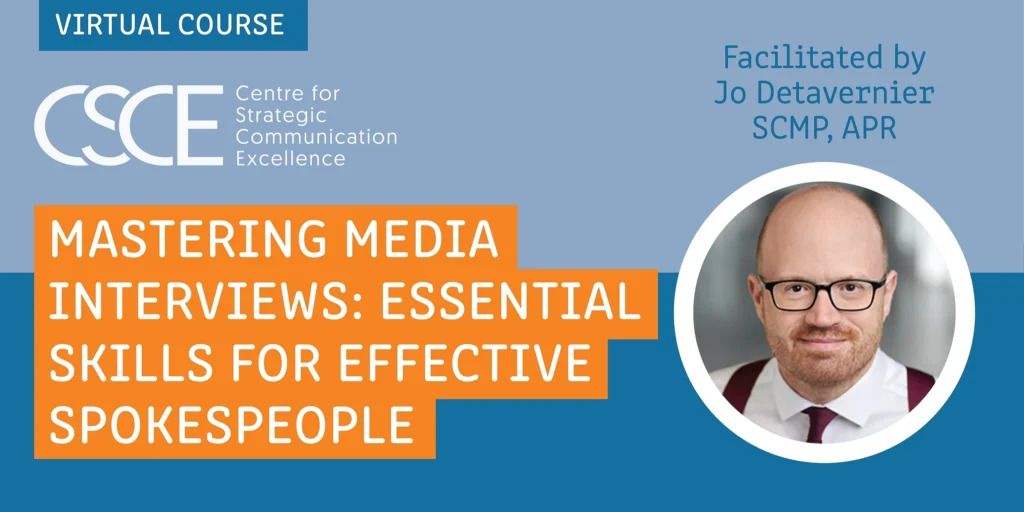Integrating artificial intelligence (AI) tools into our workflow offers substantial benefits in today’s rapidly evolving professional communication landscape. It can streamline operations, enhance efficiencies, and lead to significant cost savings. Moreover, it will free you up to focus on what adds value: advising the business.
However, a strategic approach is essential to effectively incorporating AI into our communication strategies. Drawing from my experience in launching The Centre for Strategic Communication Excellence (CSCE) AI boot camp, I’ve developed a model that seamlessly integrates AI tools into your daily workflow. This model empowers you to leverage AI to transform your communication processes, creating efficiency and cost savings. Let’s delve into the model and explore each step.

Step 1: Identify Business Needs and Desired Outcomes
Before exploring AI solutions, it’s crucial to define your goals. Are you aiming to automate routine tasks, personalise content, or improve data management? These goals will guide your selection of AI technologies. Start by assessing your current processes and identifying areas where AI can make a significant impact. For example, will deploying Grammarly across your organisation assist in saving your team time editing others’ work or improving written communication, helping you meet that goal of clear communication?
Step 2: Audience Analysis & Stakeholder Mapping
AI tools offer potent insights into audience preferences and behaviours, but they require accurate input data to be effective. Use stakeholder maps to identify who will be affected by AI implementation and gather detailed data on your communication audiences. This step ensures that the AI solutions chosen align with audience needs and strategic goals. Think about using AI tools to help you with deep audience insight.
Step 3: Choose the Right AI Solutions
With clear objectives and audience insights, select the AI technologies that best suit your needs. Whether it’s natural language processing (NLP) to enhance customer interactions, sophisticated analytics for campaign monitoring, or employee insights, the right technology should align with your strategic goals and be scalable.
Step 4: Implementation Planning
Develop a detailed plan for integrating AI tools into your existing systems. This includes ensuring all team members are trained and comfortable with the new technology. Change management strategies are crucial here to facilitate a smooth transition and ensure widespread adoption.
Step 5: Execution and Monitoring
Deploy the chosen AI tools according to your implementation plan. Monitor the rollout closely to address any technical issues promptly. Establish metrics to measure AI performance against expected outcomes, such as efficiency gains and communication quality improvements.
Step 6: Evaluation and Adjustment
Post-deployment, it’s crucial to thoroughly evaluate AI’s impact on your communication processes and business operations. This step is not just about ticking a box but about ensuring that the AI tools are delivering the anticipated communication outcomes. By conducting an ROI analysis, you can determine the financial benefits of your AI implementation, further reinforcing the effectiveness of your strategic approach.
Step 7: Ethical Considerations and Compliance
Ensure your AI implementations comply with legal standards and ethical guidelines. AI tools should respect privacy, avoid bias, and operate transparently. Regularly review and adjust AI strategies to align with these standards and respond to new regulatory requirements as they occur.
Integrating AI into communication strategies is not just about adopting new technology—it’s about enhancing the strategic impact of the communication function across the board. By following the CSCE’s seven-step model, communication professionals can ensure they adopt AI effectively and align it with both business objectives and ethical standards. This strategic approach optimises communication practices and underscores our commitment to responsible AI use, demonstrating the profound value that AI can bring to the dynamic field of professional communication.
This article was produced using a combination of AI for research, Image creation, formatting and editing. The author has created the original ideas, innovation and fact-checking in accordance with the Centre for Strategic Communication Excellence principles of responsible AI for the communication profession.
Adrian Cropley
Founding Director
Centre for Strategic Communication Excellence




